Day #3 - Cologne Germany (Page Eight)


We traveled overnight the 145 miles from Kinderdijk to Cologne Germany on the Rhine. Cologne, a 2,000-year-old city spanning the Rhine River in western Germany, is the region’s cultural hub.
A landmark of High Gothic architecture set amid reconstructed old town, the twin-spired Cologne Cathedral is also known for its gilded medieval reliquary and sweeping river views.
The adjacent Museum Ludwig showcases 20th-century art, including many masterpieces by Picasso, and the Romano-Germanic Museum houses Roman antiquities.

Nice cruise overnight

The Rhine River goes through the middle of the city


We pass by Stadt Zons early in the morning seeing Parish church St. Martinus
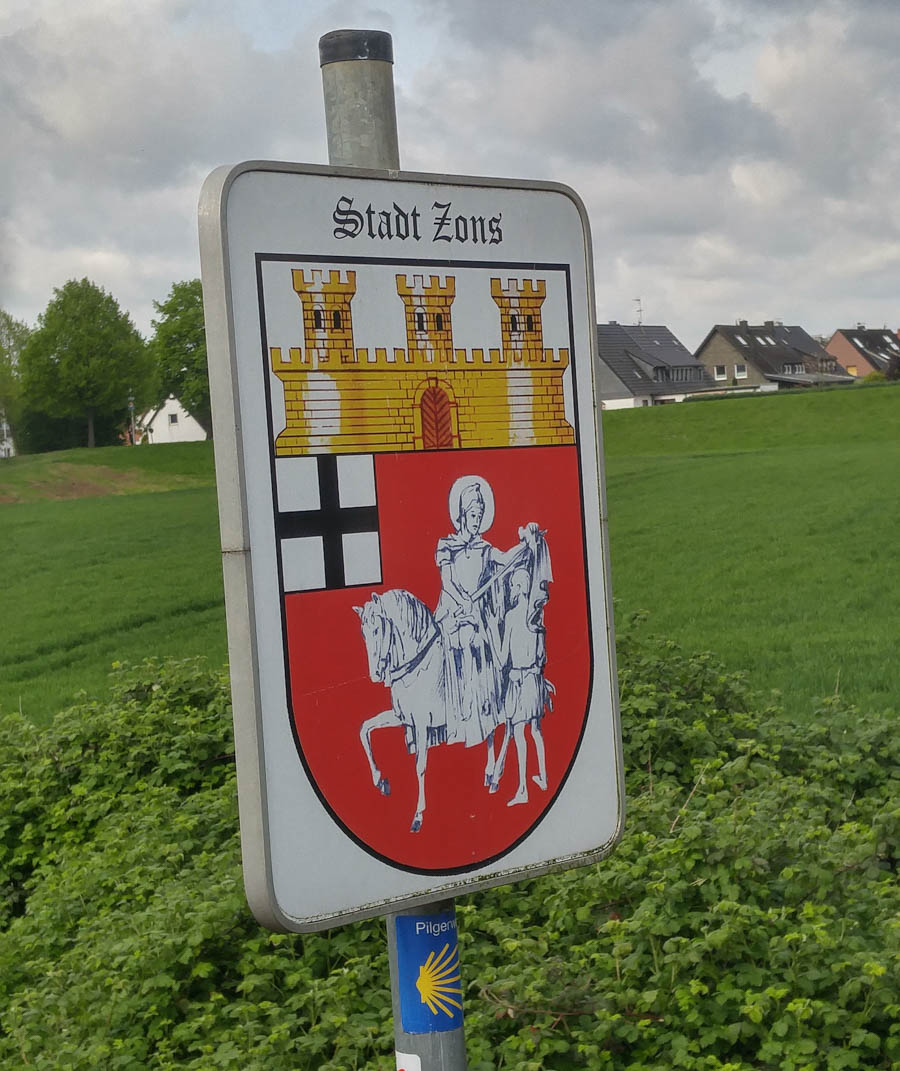
Every city seems to have a Coat Of Arms

Docking in Cologne in a few minutes from here
Did You Know? - River cruise ships in Cologne dock right in the heart of Cologne. This beautiful city is literally just steps away, and areas further out are easily accessible by public transportation.

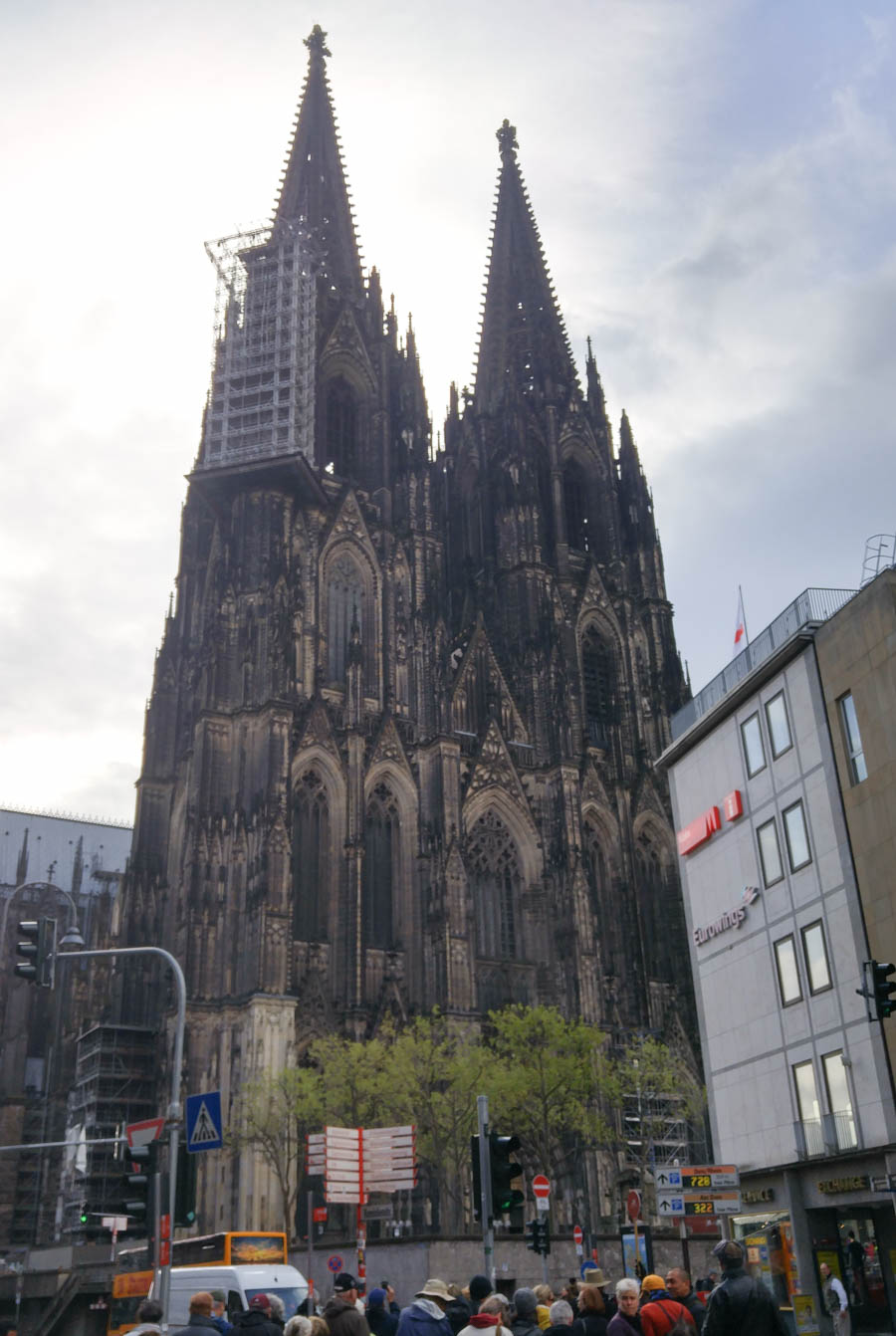

Cologne Cathedral undergoing some restoration
Did You Know? - Cologne Cathedral (German: Kölner Dom, officially Hohe Domkirche Sankt Petrus, Latin: Ecclesia Cathedralis Sanctorum Petri, English: Cathedral Church of Saint Peter) is a Roman Catholic cathedral in Cologne, Germany. It is the seat of the Archbishop of Cologne and of the administration of the Archdiocese of Cologne. It is a renowned monument of German Catholicism and Gothic architecture and was declared a World Heritage Site in 1996. It is Germany's most visited landmark, attracting an average of 20,000 people a day and currently the tallest twin-spired church at 157 m (515 ft) tall.

The scafolding was quite a feat in itself

Towering over large buildings
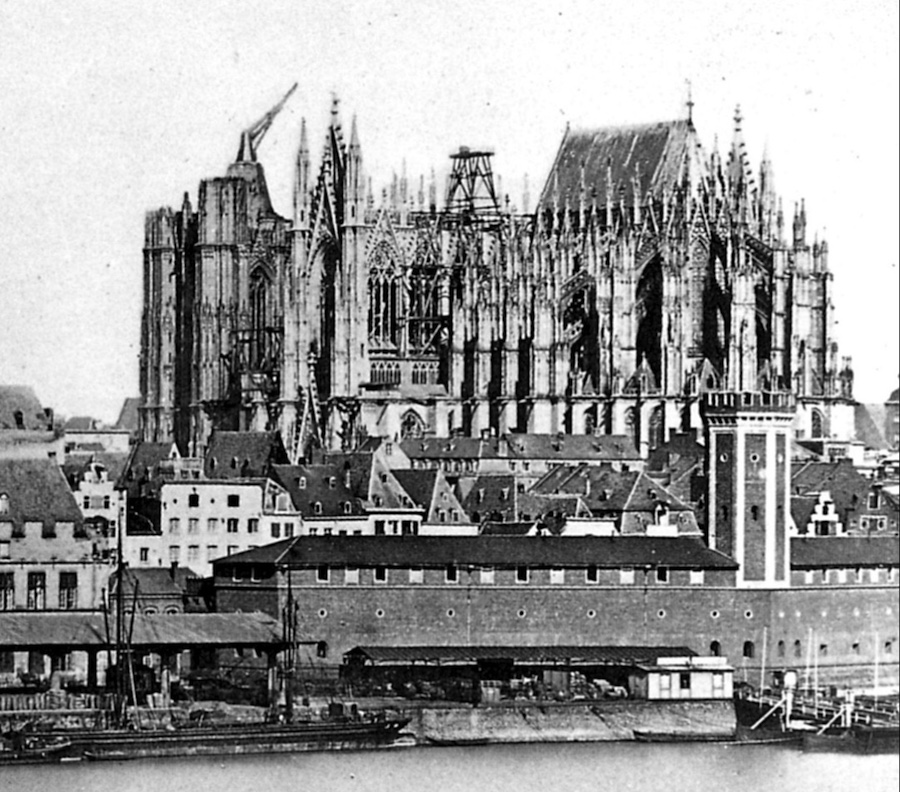
Photo of construction circa 1850
Did You Know? - Construction of Cologne Cathedral commenced in 1248 and was halted in 1473, leaving it unfinished. Work restarted in the 19th century and was completed, to the original plan, in 1880. The cathedral is the largest Gothic church in Northern Europe and has the second-tallest spires. The towers for its two huge spires give the cathedral the largest façade of any church in the world. The choir has the largest height to width ratio, 3.6:1, of any medieval church

Many small statues surround the cathedral
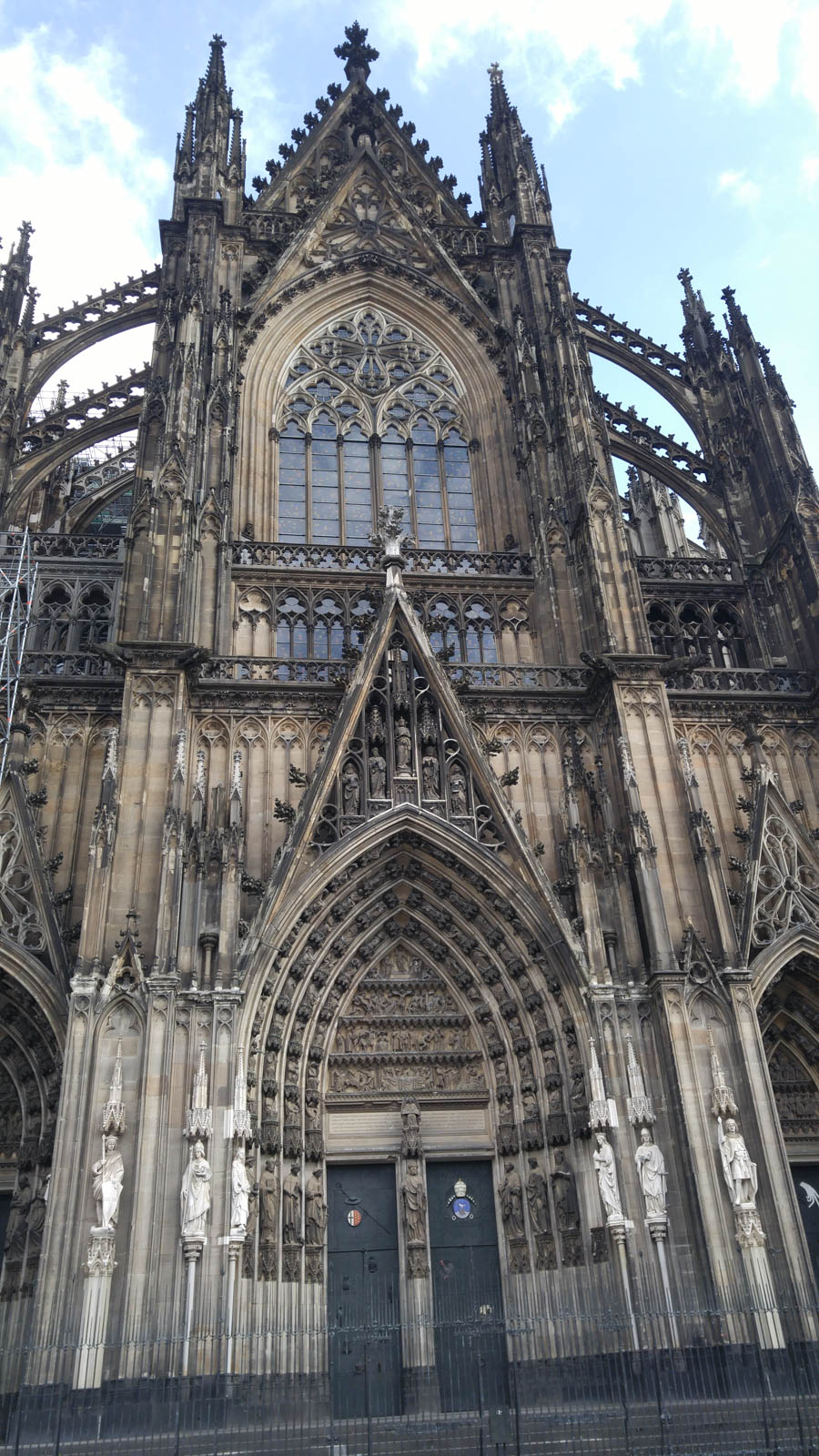
Extremely ornate
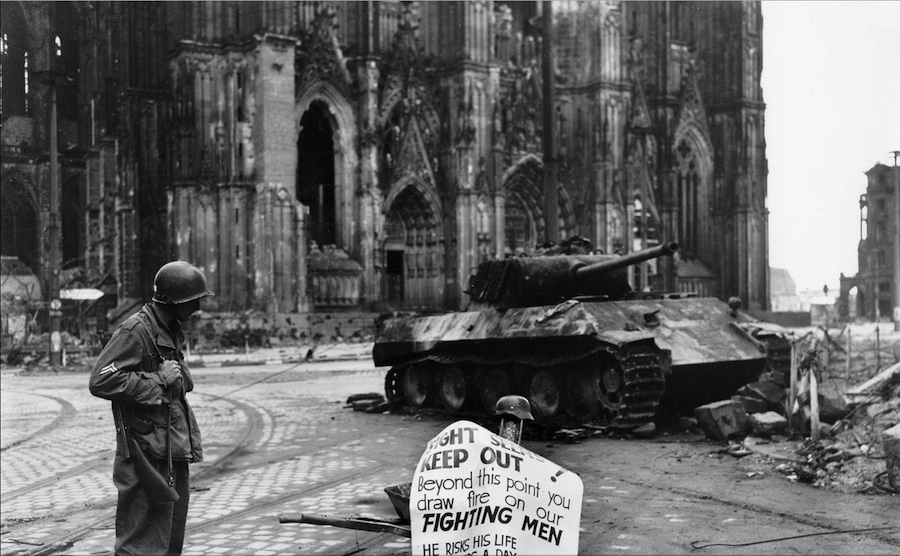
Did You Know? - Original caption: Cologne, Germany - Cpl. Luther E. Boger, Concord, N.C., skytrooper, reads a warning sign in the street. This street leads to the Rhine River and is under observation of the Germans who occupy a stronghold there. Cpl. Boger is with the 82nd Airborne Division. 4 April 1945.
The German tank is burnt out and the torsion-bars have been destroyed by the immense heat of the fire.
Allied troops captured the western part of Cologne on 6th-7th March 1945. The German army still held the eastern shore of the Rhine and attacked the Allies with artillery.
The rest of Cologne was captured between 12th and 15th April 1945.
Until the 16th April a strip of about 500m along the shore had been declared as a restricted area and the cathedral was just within this zone. Text on sign reads: SIGHT SEERS KEEP OUT! Beyond this point you draw fire on our FIGHTING MEN HE RISKS HIS LIFE 24 HOURS A DAY DO YOU??

Just amazing and the carvings/statues were fantastic

The front is getting an overhaul... Cleanup and repairs
Did You Know? - Repair and maintenance work is constantly being carried out in one or another section of the building, which is rarely completely free of scaffolding, as wind, rain, and pollution slowly eat away at the stones. The Dombauhütte, established to build the cathedral and keep it in repair, is said to employ the best stonemasons of the Rhineland.

Up close, there is hardle a space without some carvings on it

Reaching for the sky
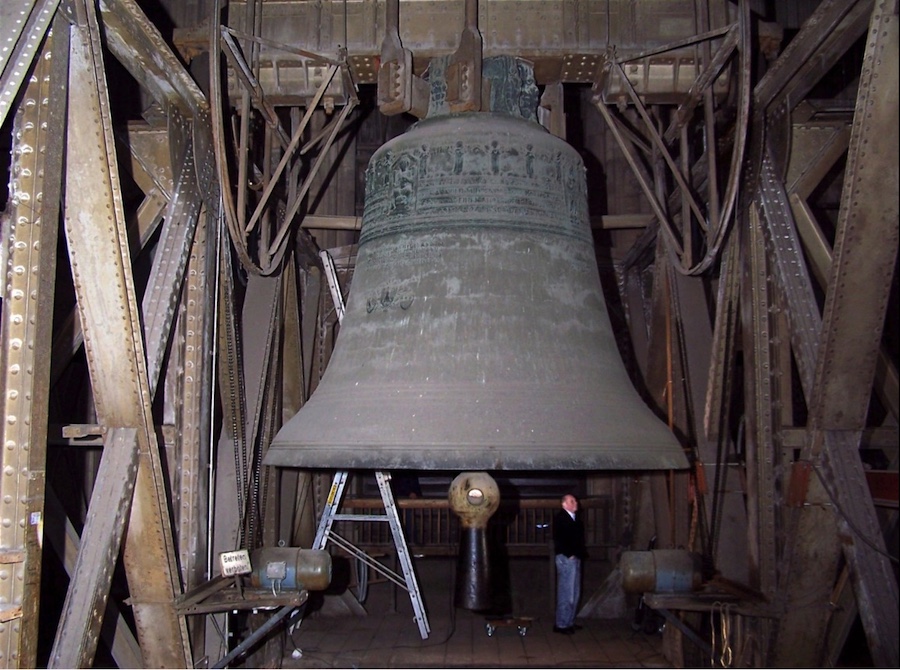
An amazing feat was performed hanging the
bell after the church was competed
Did You Know? - Saint Peter's bell (orig. German: St. Petersglocke, referred to in the Colognian language as Decke or Dekke Pitter and in common parlance as Dicker Pitter i.e. Fat or Big Peter) is the largest bell in Cologne Cathedral.
It was cast in 1923 by Heinrich Ulrich in Apolda and hangs in the belfry of the south tower. With a weight of approximately 24,000 kg, a clapper weighing ~700 kg and a diameter of 322 cm, it is the largest (horizontally mounted) freely swinging ringable bell in the world.
Whn the bell was cast in 1923, the bell-founder refused to take German marks as a payment because of the hyper-inflation. Instead the Cathedral Chapter paid 5000 US dollars. The predecessor of the bell was the "Emperor's Bell" (orig. German: Kaiserglocke) or Gloriosa ("Glorious") of 1873 which at 27,180 kg was even heavier than the St. Peter's bell.
In 1918 it was melted down, because of the poor sound quality and the inadequate tone. Its metal was used for war purposes. During its thirty-year life it had regularly been put out of service to attempt to fix the inappropriate sound. Because of this the bell was nicknamed Große Schweigerin, or "big silence".

Repair materials were stored closeby
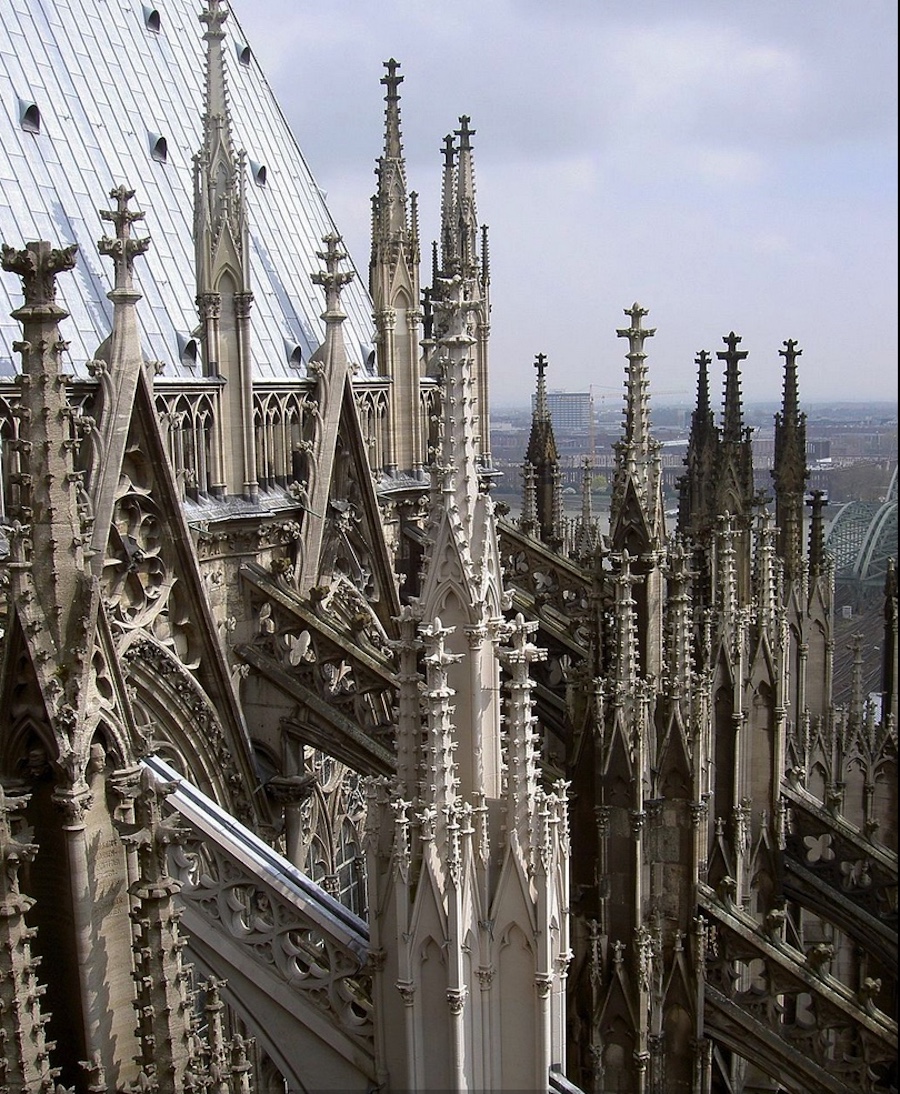 The flying buttresses and pinnacles of the Medieval east end
The flying buttresses and pinnacles of the Medieval east end
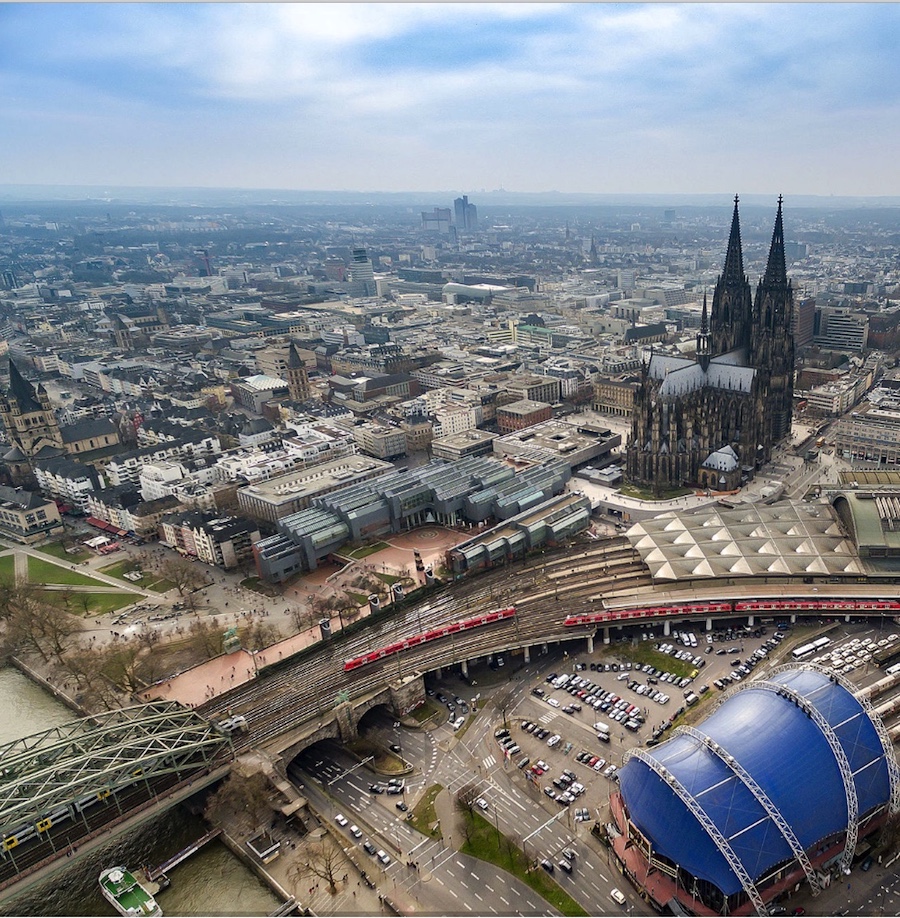 Located adjacent to the train station and close to the Rhine River
Located adjacent to the train station and close to the Rhine River
Did You Know? - The cathedral suffered fourteen hits by aerial bombs during World War II. Badly damaged, it nevertheless remained standing in an otherwise completely flattened city. The twin spires were an easily recognizable navigational landmark for Allied aircraft bombing.
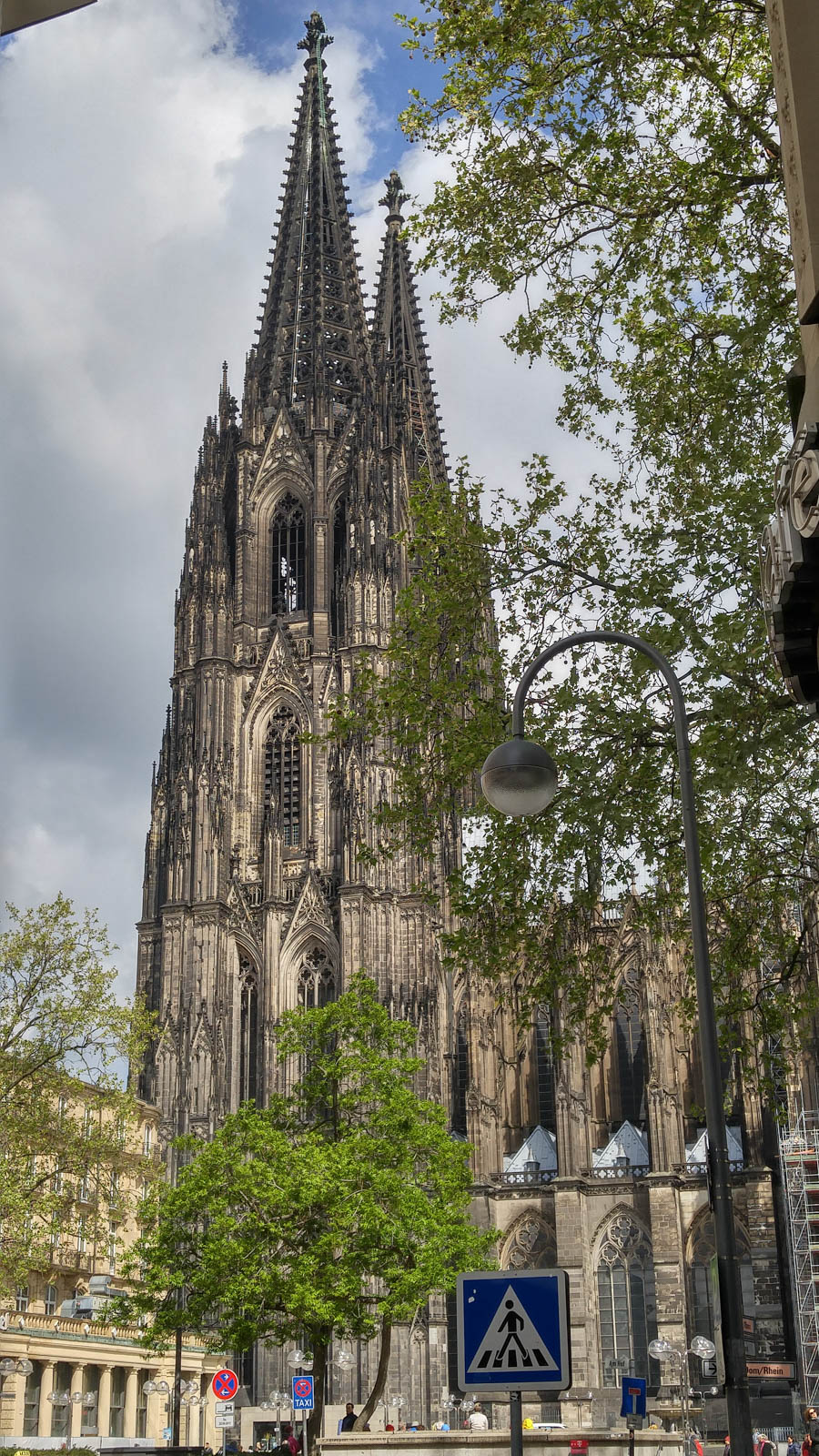
The structure is dominate

Did You Know? - The Alter Market...During the Roman era a port was located here, at a tributary of the Rhine river. Over time the port became silted up and in the tenth century the tributary was completely filled in, after which the area became Cologne's central market square.
Initially the Alter Markt was connected with the Heumarkt square, and until the thirteenth century it formed one long marketplace. During the late Middle Ages the square was also the site of public executions and occasionally jousting tournaments were held here.
\

Statues seem to be everywhere

Nicely maintained

Historic town square with a variety of shops, restaurants & bars, plus a famous Christmas market.

An amazing 3-D map of the local area was available for review
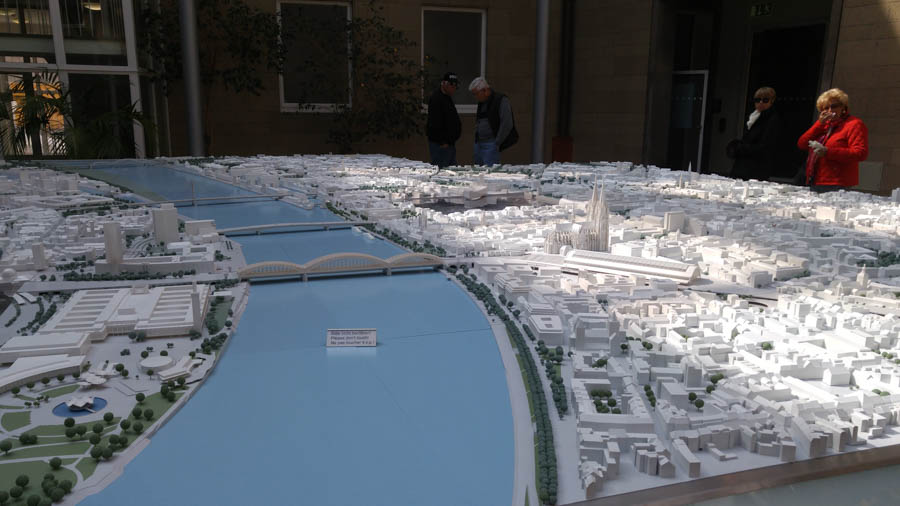
Very precise replica

Hard to see but in 1945, the train station was
just a few blocks from the cathedral
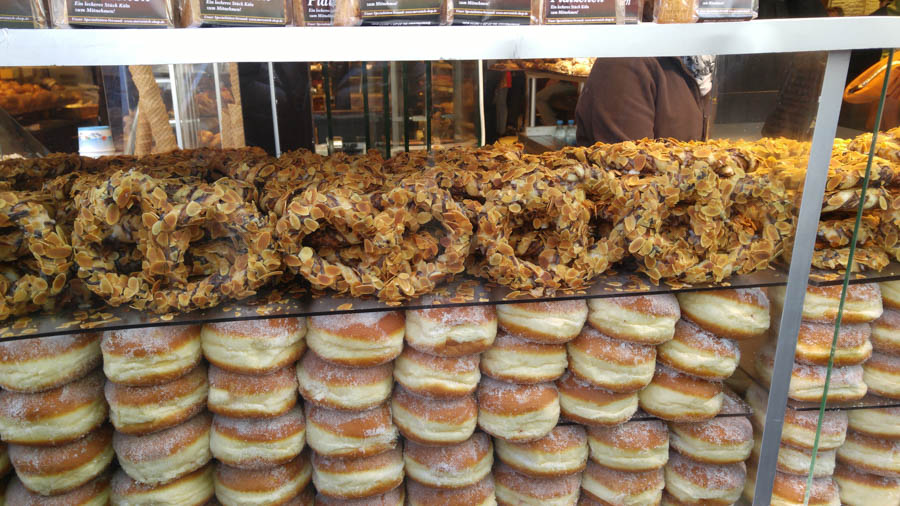
Not a town square or shopping area without a German bakery

Watch those calories
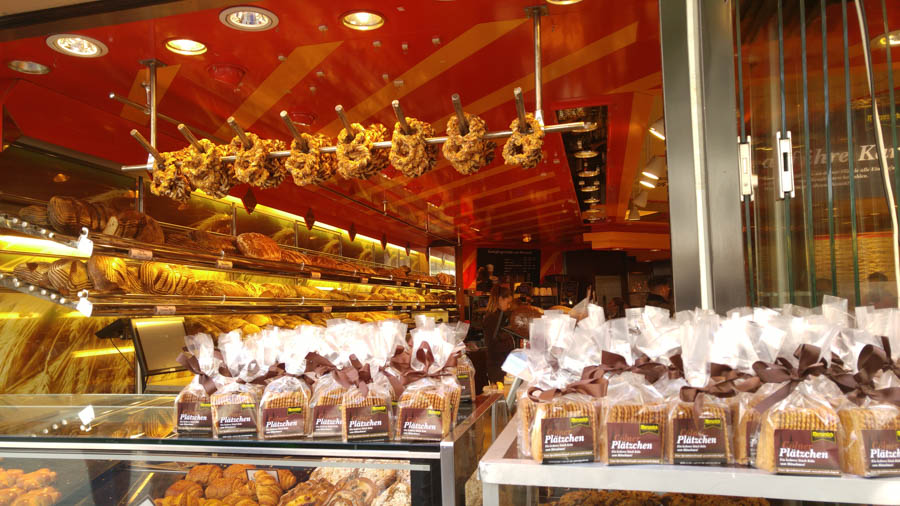
Let's eat!
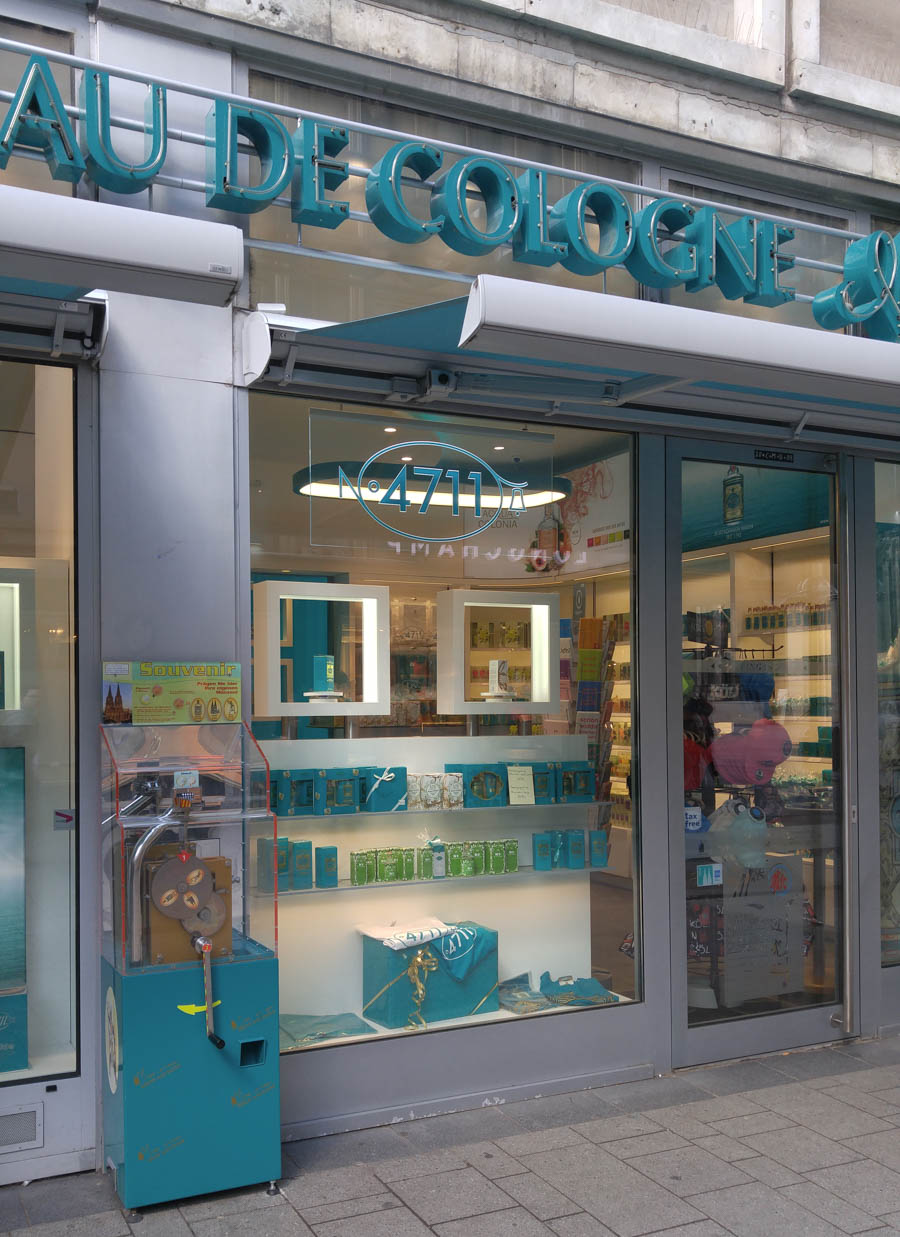
It came from here
Did You Know? - Eau de Cologne meaning “Cologne Water”, or simply cologne, is a perfume originating from Cologne, Germany. Originally mixed by Johann Maria Farina in 1709, it has since come to be a generic term for scented formulations in typical concentration of 2%–5% and also more depending upon its type essential oils or a blend of extracts, alcohol, and water.
In a base of dilute ethanol (70%–90%), eau de cologne contains a mixture of citrus oils including oils of lemon, orange, tangerine, clementine, bergamot, lime, grapefruit, blood orange, and bitter orange. It can also contain oils of neroli, lavender, rosemary, thyme, oregano, petitgrain (orange leaf), jasmine, olive, oleaster, and tobacco.
In contemporary American English usage, the term "cologne" has become a generic term for perfumes usually marketed towards men.
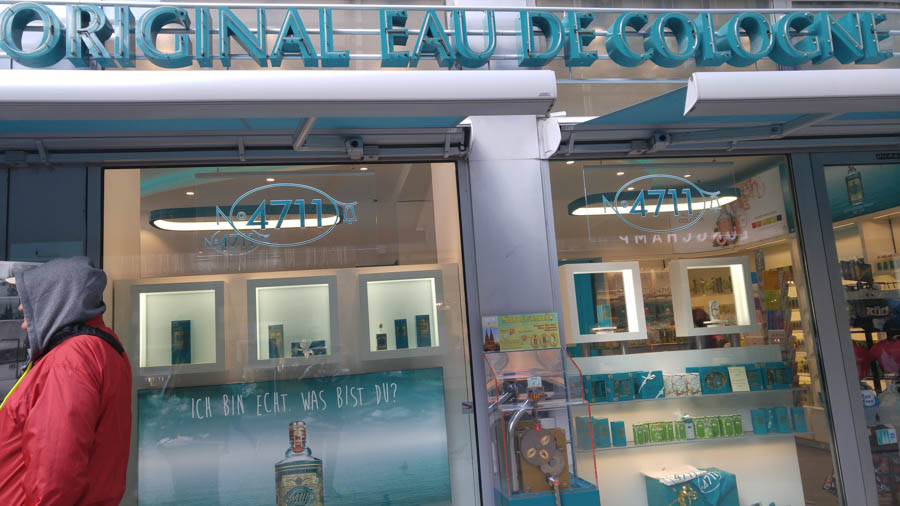
4711?
Did You Know? - The most famous[citation needed] Original Eau de Cologne is 4711, named after its location at Glockengasse No. 4711. It was also developed in the 18th century by Wilhelm Mülhens in Cologne and is therefore one of the oldest still produced fragrances in the world. On 12 December 2006, the perfumes and cosmetics company Mäurer & Wirtz took over 4711 from Procter & Gamble and has expanded it to a whole brand since then.

Walking down the Rhine was made easy by the paths adjacent to the river
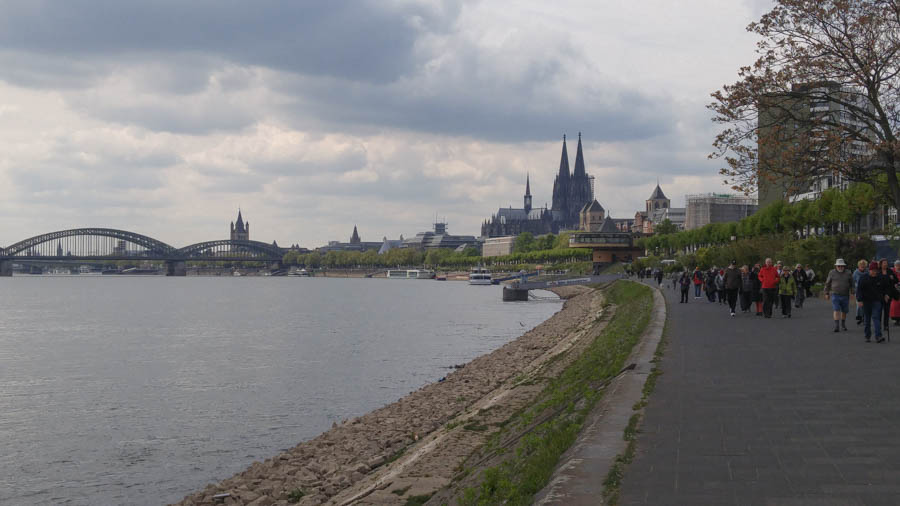
We keep track of our ship so we do not get lost

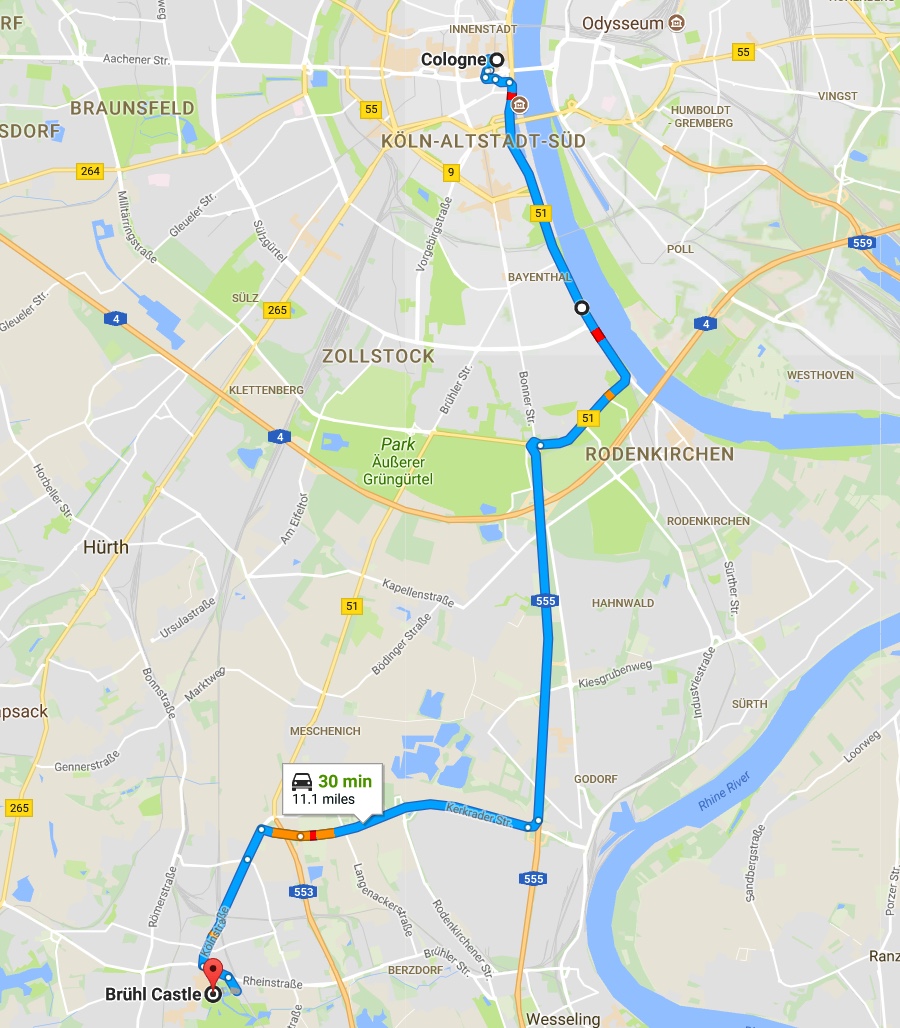
Ten miles outside the city we visit
Augustusburg and Falkenlust Palaces
Did You Know? - The palaces were built at the beginning of the 18th century by the Archbishop-Elector of Cologne, Clemens August of Bavaria of the Wittelsbach family. The architects were Johann Conrad Schlaun and François de Cuvilliés.
The main block of Augustusburg Palace is a U-shaped building with three main storeys and two levels of attics. The magnificent staircase was designed by Johann Balthasar Neumann.
The gardens were designed by Dominique Girard. An elaborate flower garden for an area south of the palaces was also designed, but it was restructured by Peter Joseph Lenné in the 19th century and turned into a landscape garden.
Attempts to renovate the area have proven difficult, due to poor source material availability.
Falkenlust hunting lodge was designed by François de Cuvilliés and built from 1729 to 1740, in the style of the Amalienburg hunting lodge in the park of Nymphenburg Palace.
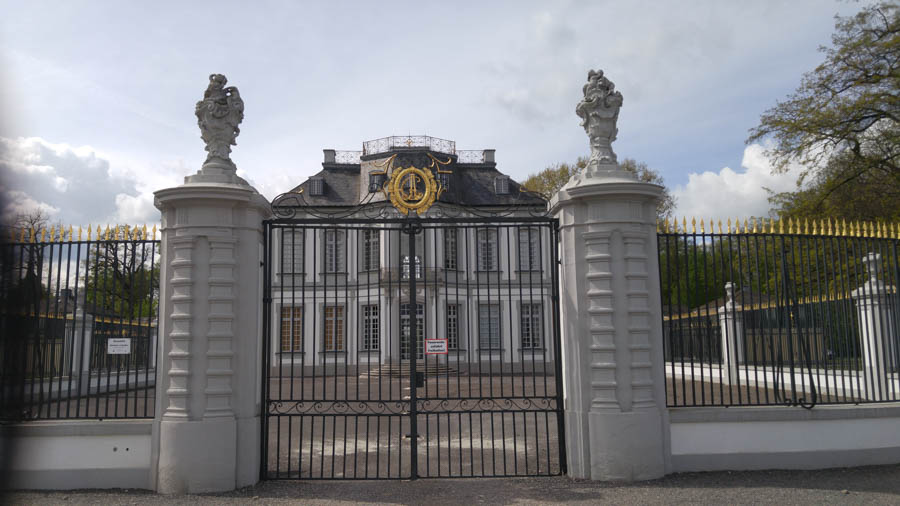
This is just the Hunting Lodge!
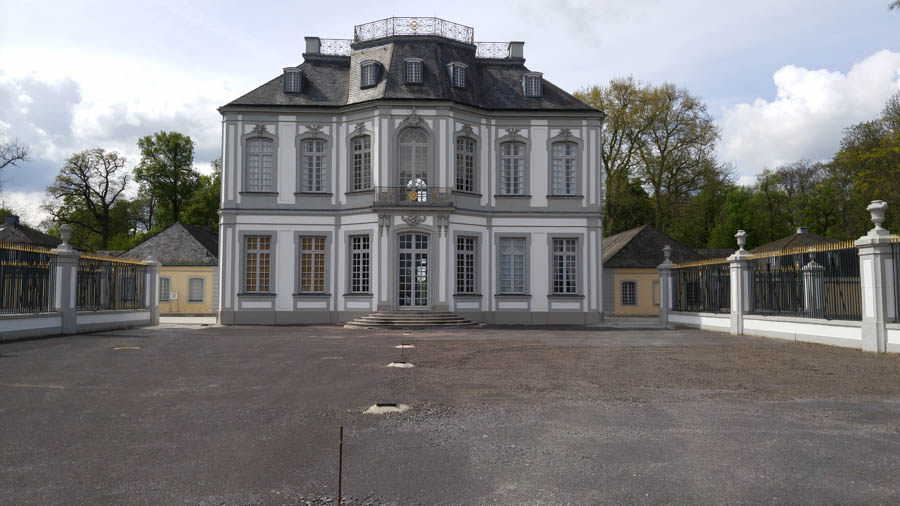
Quite a building for a hunting lodge

A restaurant right on the property
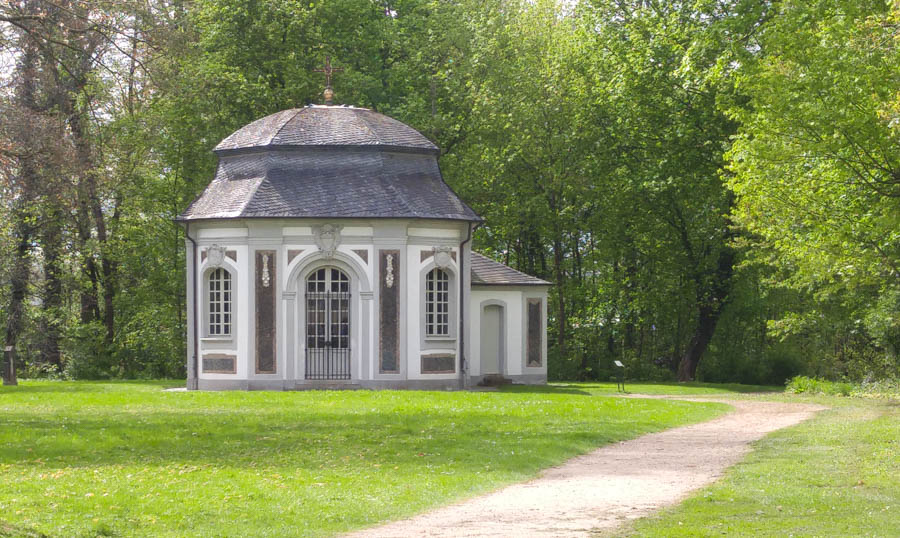
It was closed today... We will dine on board our ship instead

UNESCO Heritage site

The line formed and we went inside

On the bus heading for the main palace

One gets an idea of how large from the air
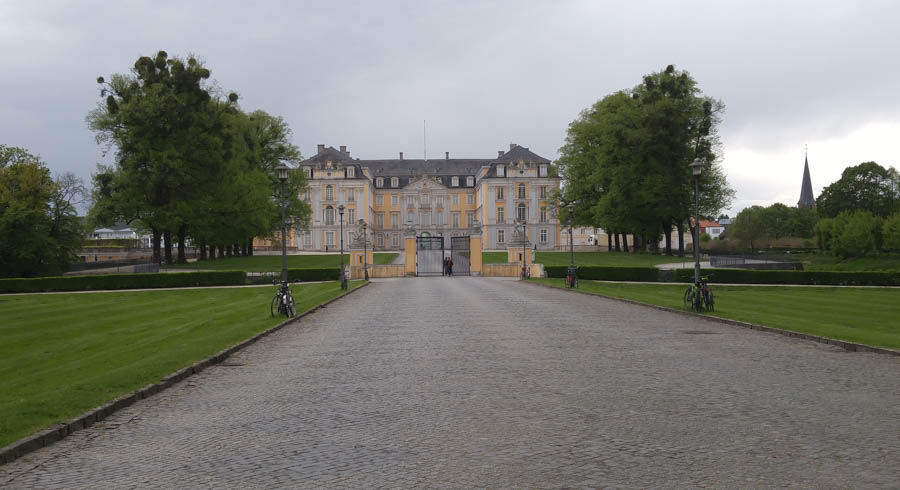
Looks small from a disance but...

It is huge

Statues at the gates bid us welcome

She says come on in!

We walked to the main entrance to the Schloss Augustusburg

Coats of Arms were on display
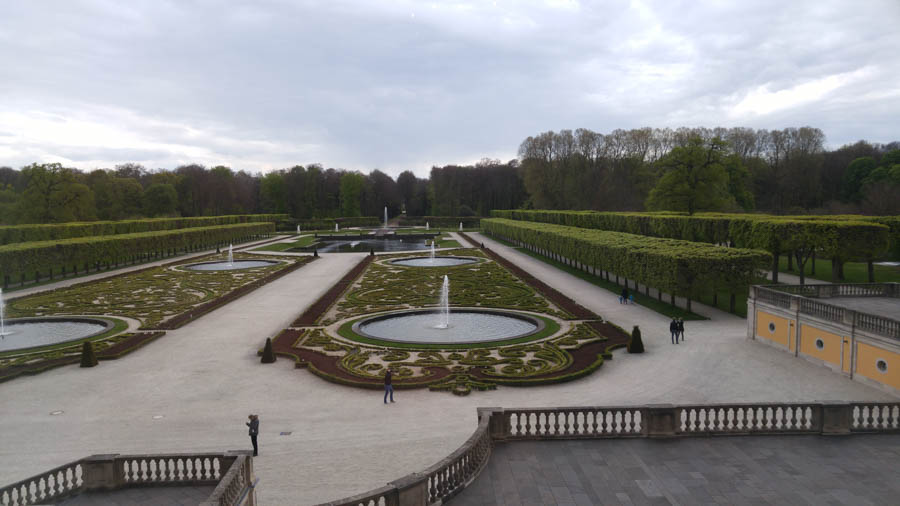
The gardens were simply amazing
Did You Know? - The gardens were designed by Dominique Girard. An elaborate flower garden for an area south of the palaces was also designed, but it was restructured by Peter Joseph Lenné in the 19th century and turned into a landscape garden.
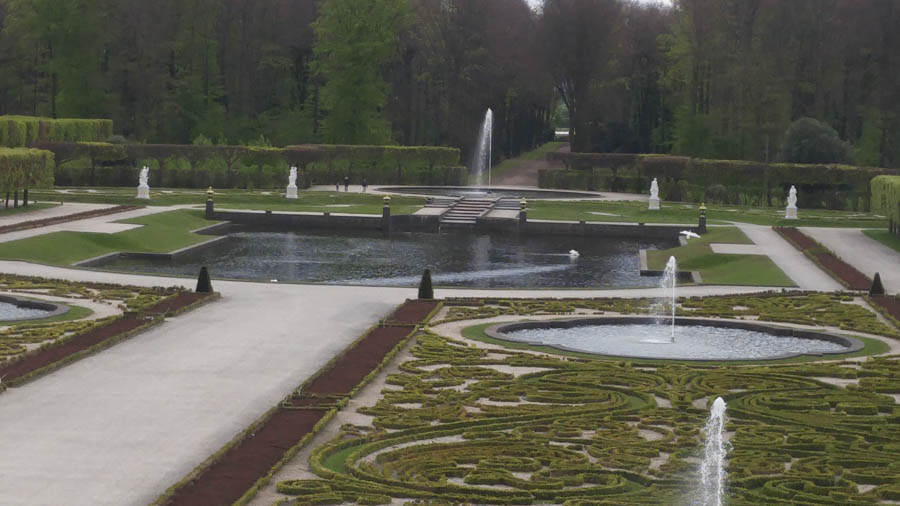
Lots of space to walk around


Amazing view from inisde the castle
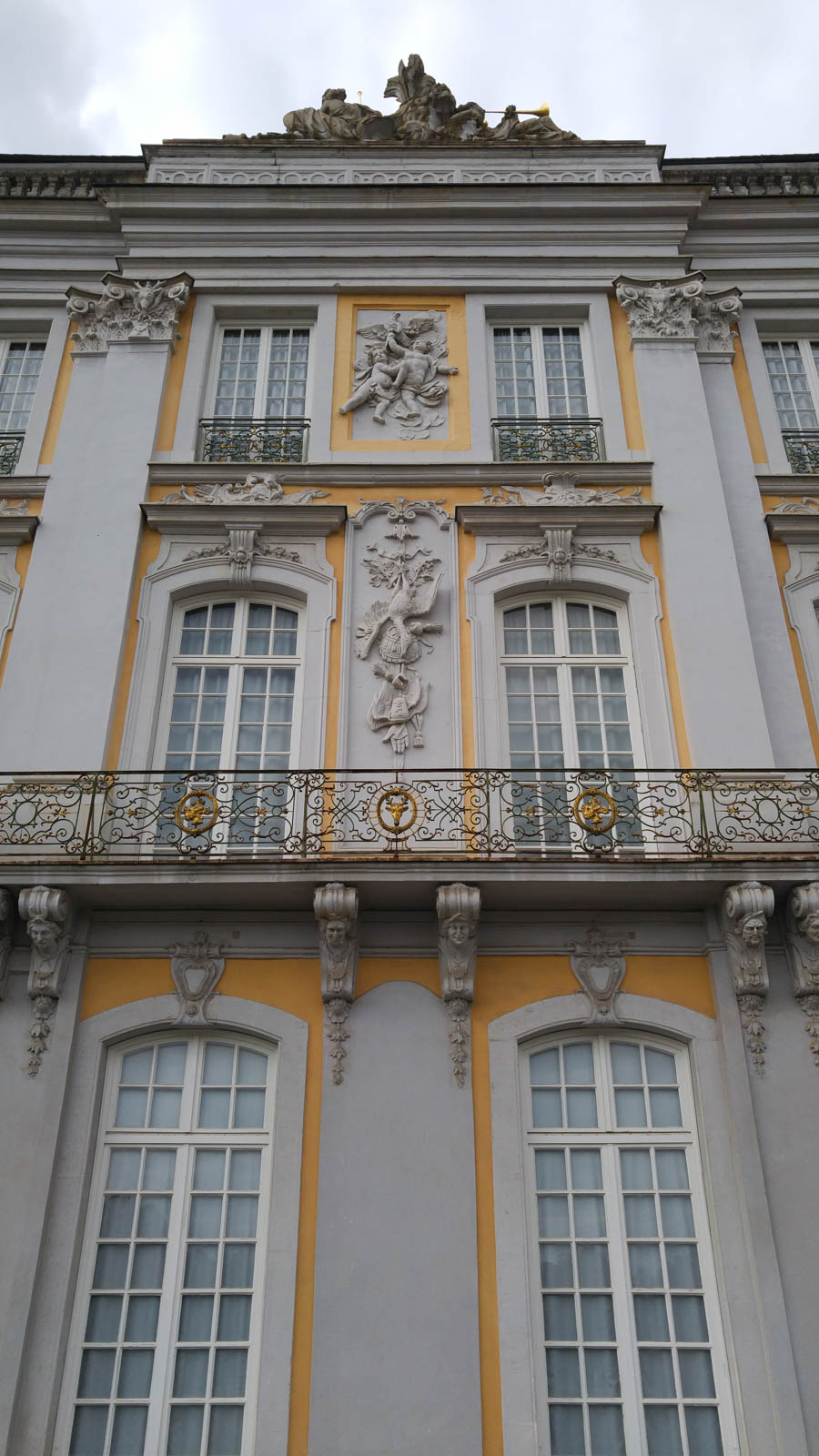
The decoration is quite ornate and lots of wrought iron
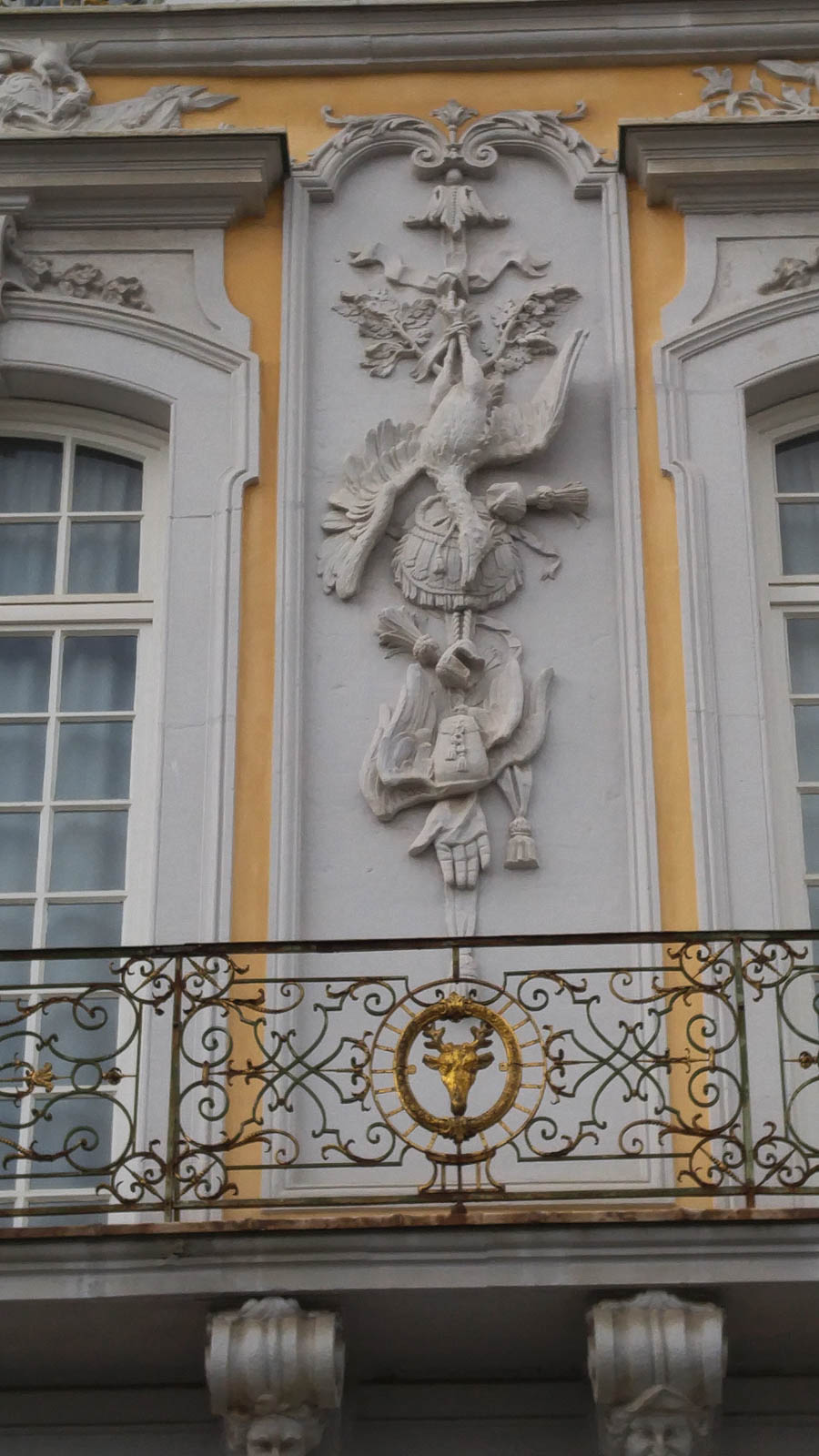
Love the deer

We are heading back to the ship

G'Day Mam!
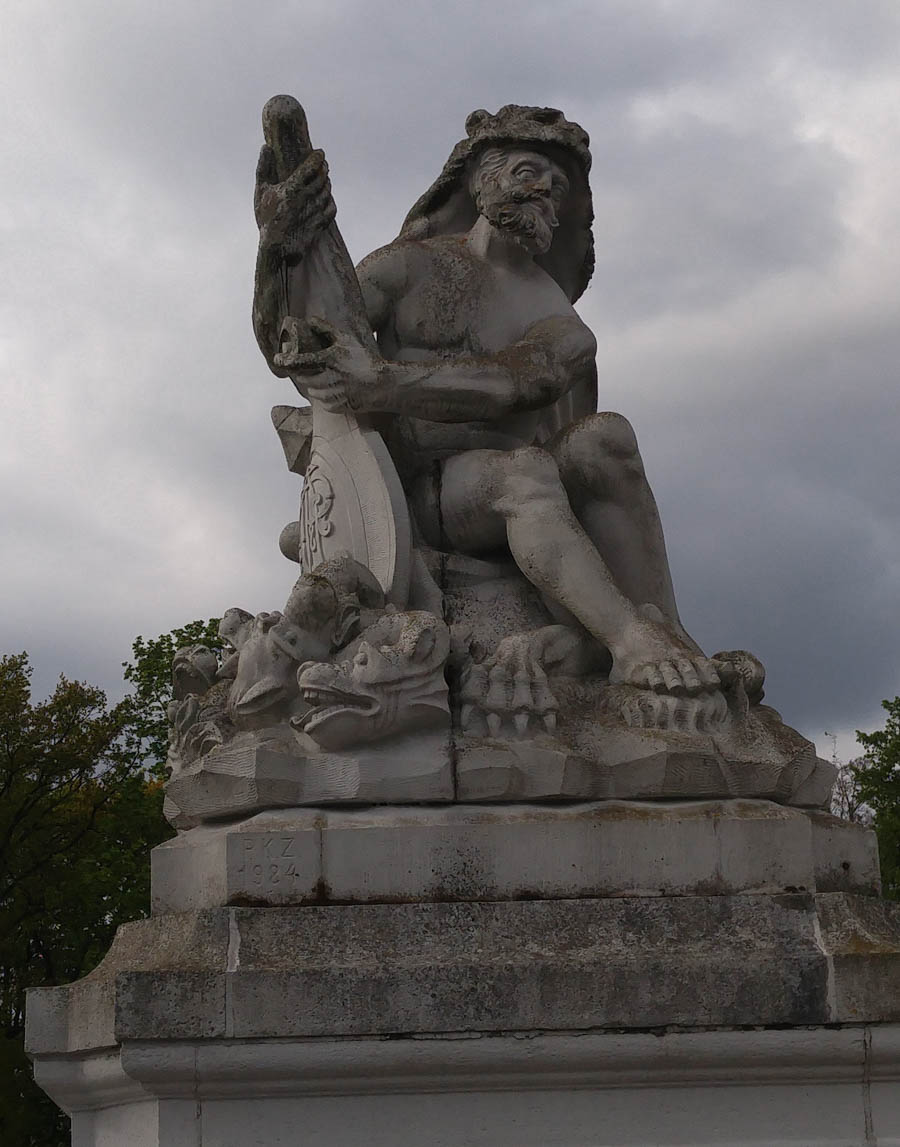
Our own Lutteologist!
